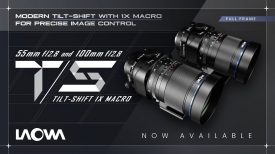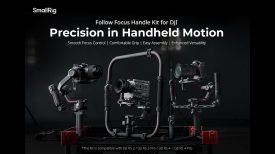When you are trying to decide whether to purchase a stills lens, or cine lens, there are a number of factors you need to take into consideration. The obvious assumption to make is that a cine lens must be better than a still lens because it costs so much more. But, just because you can go for a cine lens doesn’t mean you always should. For me, the decision about which type of lens to choose really comes down to the work you do and whether you are working by yourself, or in a larger crew.
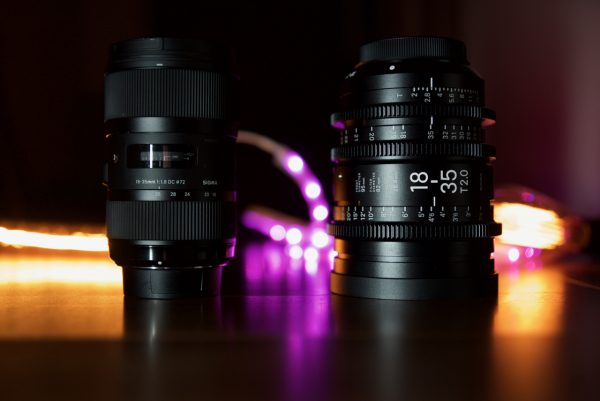
Sigma is one of several manufacturers that now offer stills and cine lenses that share the same optical design. Their 18-35mm and 50-100mm cine lenses have just gone on sale (in EF and E-mount, with PL to follow in 2017) and several readers have been asking what the differences are between the two? Because the cine lenses are based on the same optical design as their stills counterparts, the image quality and characteristics of the both lenses should in theory be the same. So do they warrant you spending more than four times the price to purchase the cine versions? In this part of my ongoing review I am going to try and answer these questions for you and demonstrate the differences between the two versions.
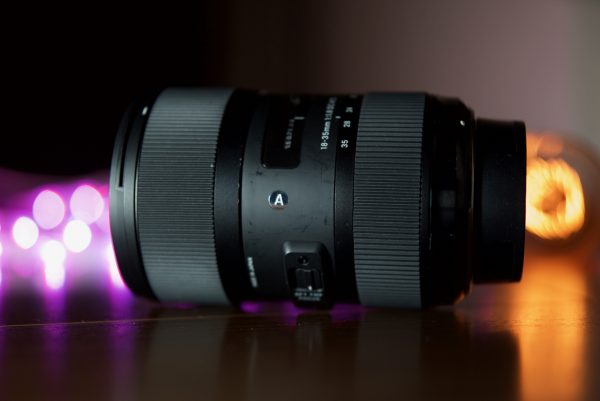
I only own the stills version of the 18-35mm F1.8 and not the 50-100mm F1.8, so my findings will only be based on this lens. That said, I suspect that a lot of the same conclusions could be drawn for the 50-100mm as well.
Still photography lenses are designed for taking a single photo at a time, and not for focusing, zooming and making aperture adjustments when recording video. Stills zooms are primarily created so that you only have to carry one or two lenses around, instead carrying a bag full of primes. Most stills photo zoom lenses aren’t really zoom lenses at all in the strictest sense, they are mostly varifocal lenses that don’t hold focus while you change focal length.
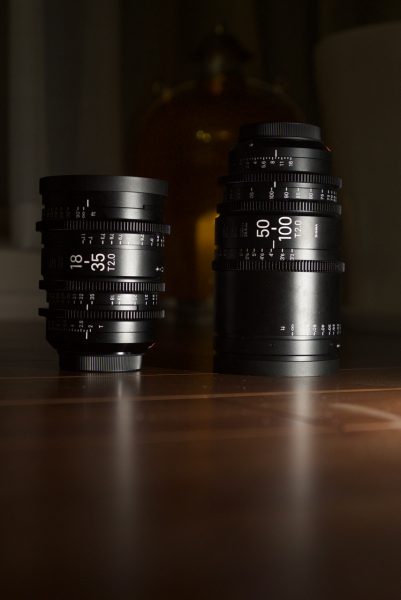
For video shooting the ideal solution is to have a lens that can be zoomed, and then re-focussed, while you are recording. Several attributes can make a stills zoom lens less suitable for video work. These include focus shifting while zooming, focus breathing, aperture ramping (although many cine zooms also ramp, but usually not as much) and zoom tracking. Most cine zoom lenses are built to overcome these issues, which is primarily why they are a lot larger, heavier and more expensive. They are also built in much smaller numbers, often by hand, so therefore don’t benefit from the economies of scale that popular stills lenses do.
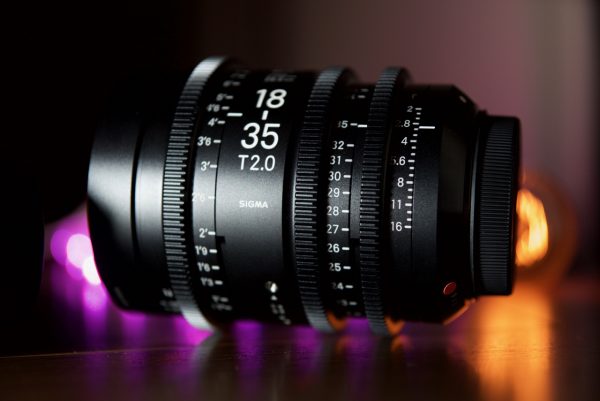
However, its already widely known that the Sigma 18-35mm and 50-100mm photo zooms are quite different to your average stills lens. They already have a keen following amongst video shooters and for good reason. By engineering zooms with smaller than usual zoom ranges, Sigma have managed to give them a constant f1.8 maximum aperture and they are also known to be capable of holding focus while zooming (at least with the copies we’ve tested). Breathing on the 18-35mm is quite acceptable, but is very noticeable on the 50-100mm. One would assume that the new Sigma cine lenses, being directly based on their stills counterparts, perform and operate in a more similar fashion to each other than if you were to compare a regular stills zooms against a specifically designed cine lens. In our testing so far we have seen that the new cine lenses resolve well, have little chromatic aberration and also hold focus while zooming. So how do the stills and video versions stack up when compared directly to each other?
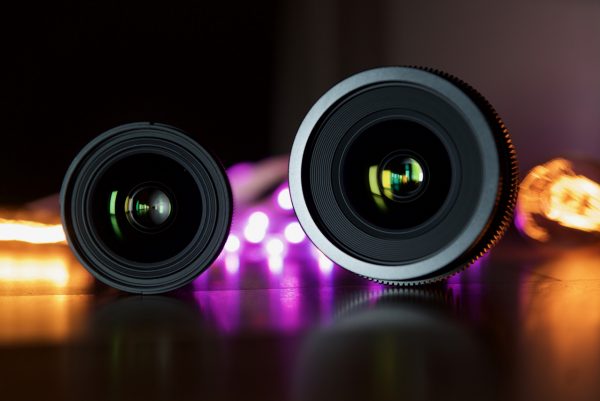
The obvious difference between the stills and cine version of the 18-35mm is the physical size and weight. Despite using the same optical design, the cine version has a more robust and larger housing. Even so, there isn’t a huge difference in the length of the lens barrels. The Canon EF mount cine version only being 8.5mm (0.33″) longer than the photo version. When it comes to getting your handgrip around the barrel of both lenses there is an obvious difference. The cine version has a barrel diameter of around 320.5mm (12.61″), while the stills version is 250mm (9.84″). The weight differential is also quite large, with the cine version coming in at 1445g (3.18lb), compared to the stills version at 811g (1.78lb). The cine versions are also claimed to be dust and splash proof with each ring being sealed.
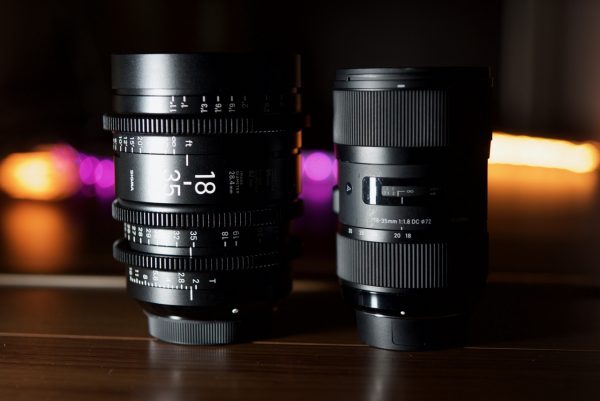
If you are a solo shooter then the physical size and weight of a lens is likely going to be a big factor when it comes to your purchase decision. This is where cine lenses can be at a disadvantage. A larger and heavier lens, when used on a smaller camera package, can cause a lot of problems when it comes to getting proper weight distribution when shooting handheld, on a tripod, slider or gimbal. A larger lens is also going to take up more space in your kit bag. Where you may of had room for four stills lenses in your bag there may now only be room for two cine lenses. Stills versions of lenses are generally a lot lighter and smaller and in most cases this makes them more suitable for solo operators or people using lighter camera packages. A stills lens could also make a lot more sense if you are using gimbals or drones. If you are working with larger crews, where there are extra hands to help out, then the weight and size of a cine lens is generally going to be less of an issue.
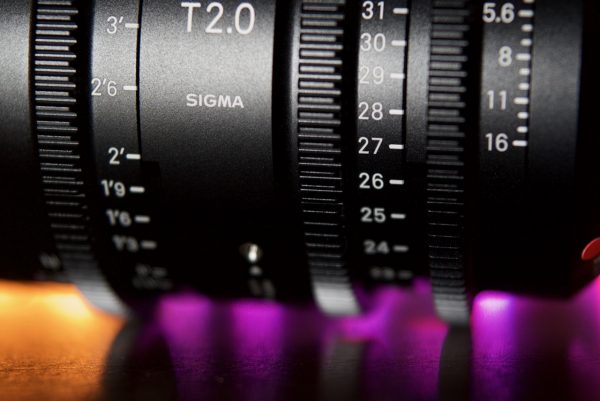
The cine versions feature 0.8 pitch geared rings which makes them easy to use with follow focus and remote FIZ systems. The stills lenses don’t come with any pitched gear rings, although you could easily add some if need be. You do need to be aware that the stills version does not have hard end stops, unlike the cine version, and this can make it very difficult to use with a remote follow focus system, even if you do retro fit cine gears. The cine version also has the added advantage of coming with a 95mm outside diameter so you can clamp a light weight matte box directly on the lens itself. If you want to use the cine version on a camera that doesn’t have internal ND filters Sigma have also made it compatible with screw in 82mm filters.
Because Sigma say both versions of the lenses use the same optical design, I was keen to find out if the lenses looked exactly the same, or whether there were any visible differences. To do this I put both the stills and cine versions of the Sigma 18-35mm on a Sony a7S and recorded UHD externally to a Convergent Design Odyssey 7Q+ recorder. I used a Nikon version of the Sigma stills version with a Novoflex adapter and a Metabones EF-E adapter with the cine lens. Above, you can see the results that I got, and at first glance it is very difficult to tell the two apart. The sharpness and contrast of both lenses looked identical and the average viewer is not going to be able to tell the difference. With the same number of iris blades on both lenses the bokeh also looks very similar. The only subtle differences I could see were that the cine version seemed to have a tiny bit less chromatic aberration and it responded a little bit differently to lens flare. I think the cine version also looked slightly nicer when it came to the softness of out of focus highlight areas. The cine version also looked slightly warmer, although only marginally, than the stills version. These slight variations could be put down to the adapters used, or other factors including the age disparity between the two lenses, or the fact that the optical coatings of the photo lens might have changed slightly over time.
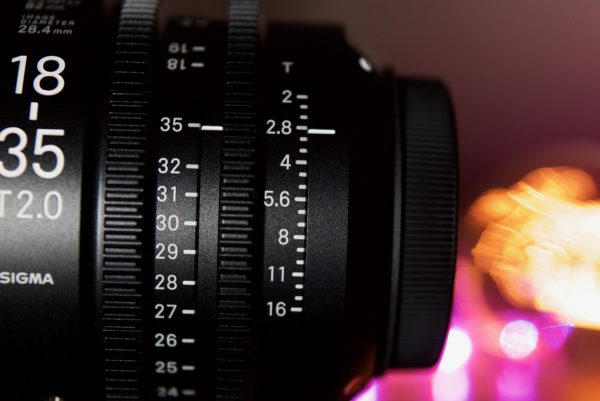
With both the cine and stills versions looking almost identical the biggest differences can be found when it comes to the physical operation of the lenses. Along with the size and weight this is going to be the biggest factor in working out whether the cine, or stills version, is the right choice for you. The cine version has a manual iris which is something that is not found on any of the stills versions of the lens, regardless of what mount they come in (with some cameras you can opt for the Nikon F or Sony A-mount versions of the stills lenses and use an adapter like those from Novoflex, or Metabones to get a mechanical iris, but then the aperture values are not marked). For video shooting a manual iris is a big deal. For me there is nothing worse than having to use a button to electronically control the iris. With native Canon EF mount stills lenses it is virtually impossible to do a smooth iris pull. If you are doing a shot where you are walking from outdoors to indoors, the electronic aperture control is not going to allow you to do your iris pull quickly, or smoothly enough. Subsequently, if you are panning from bright sun to a darker area you are also going to run into problems. The nice thing about the cine version of the Sigma lenses is that this is no longer a problem.
Along with the manual iris the other difference with the cine versions are that the focus and zoom throws are expanded. Simply put, you need to turn the cine lens focus ring much more to achieve the same focus movement. If you are used to shooting with autofocus stills lenses you may be initially shocked by just how different is it using a cine lens. If you are a solo operator who is used focusing or zooming by hand, then a cine lens may not be your best option. Many cine lenses have a near 300 degree focus throw. This is not a big deal if you are only attempting a small focus change, but if you want to pull focus from a very close object to infinity it is extremely difficult to do by hand. This can severely limit your ability to get certain shots if you are shooting solo. Sigma recognise this and have reduced the focus throw to 180 degrees for the 18-35mm and 50-100mm Cine versions. However, as you can see from my above operational tests I found that when getting certain shots the 180 degree rotation was still too much. For smaller focus pulls it is fine, but if you need to pull focus from the closest focus point to infinity it is virtually impossible to do by hand.
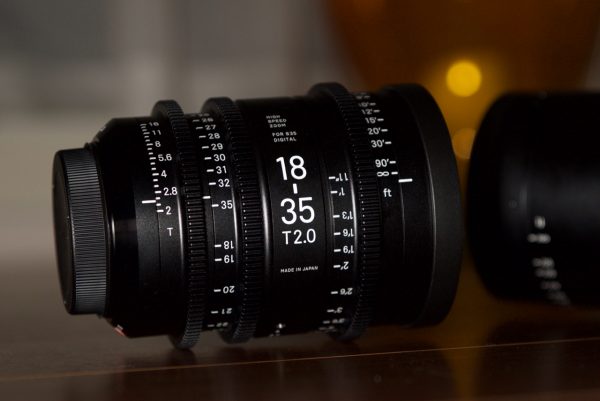
For solo operators the same thing applies to the zoom throw. If you want to go from the widest setting to the longest focal length the lens barrel has to travel 160 degrees. This is also something to keep in mind if you need to zoom in quickly to grab another shot. With the stills version you can both focus and zoom much quicker.
The expanded focus throw does however make precise focusing a lot easier, even with 180 degree barrel rotation instead of 300 degrees. Having a longer throw means you can make adjustments without the worry that image suddenly goes completely out of focus. With most autofocus stills lenses turning the barrel even slightly can result in quite a sudden shift of the focus.
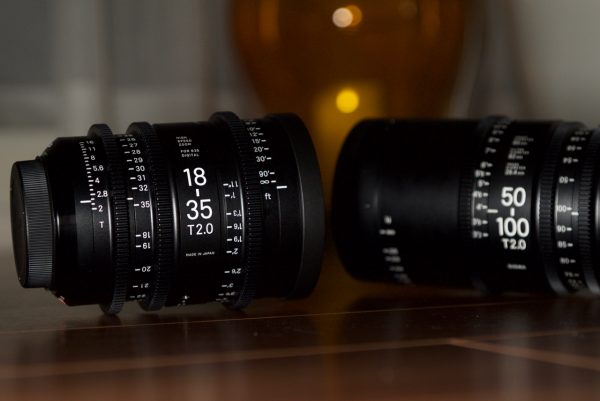
The expanded focus throw is a blessing and a curse for solo operators. If you are working on larger crews where there is at least a first AC, then having a longer focus throw is essential. The primary reason for a lens having a long focus throw is so that when it is used with an electronic follow focus system the focus puller has the ability to make more accurate and finite adjustments. If you tried to do this with a stills lens with a short barrel throw it can be a lot more difficult.
With the Sigma lenses priced at $3999 US each they are obviously going to appeal mostly to owner/operators of cameras such as the Sony FS7, Blackmagic URSA Mini, and Canon C300 Mark II, or those who are looking at perhaps purchasing their first cine lens. A lot of users of cameras such as these are going to be solo shooters who will be doing their own focus. The real conundrum for potential owners of this lens is whether it is worth getting over the stills version. The fact that it is essentially a reworked stills lens that offers almost identical performance makes that question a difficult one to answer.
It really does come down to you asking yourself three questions.
1. Am I primarily a solo operator who will doing my own focus?
2. What type of projects am I mostly working on?
3. Is the size and increased weight of a cine version of the lens going to work with my camera setup?
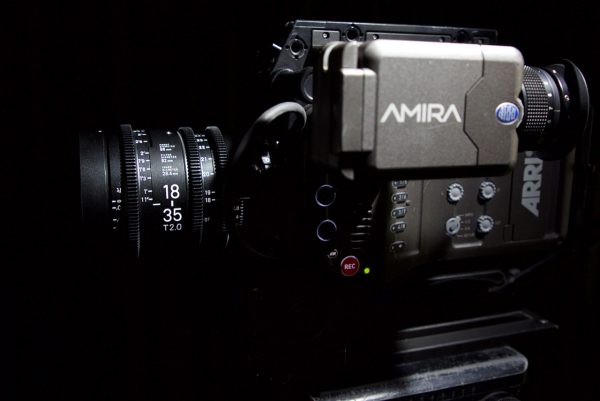
A lot of shooters think its cool to own a cine lens or that you are going to potentially impress a client by saying that you have one. If the lens ends up just hindering how you work then it doesn’t matter how cool you think it is.
If you are working on larger crews then the cine versions of the lens are absolutely the right choice and they certainly offer a very affordable alternative to much more expensive solutions. If your camera only accepts PL lenses then the cine version (PL mount) is going to be your only alternative. If you do however own a camera such as the Canon C300 mkII that has a very good auto focus system you may well be better off getting the stills version of the lenses so you can utilise this functionality.
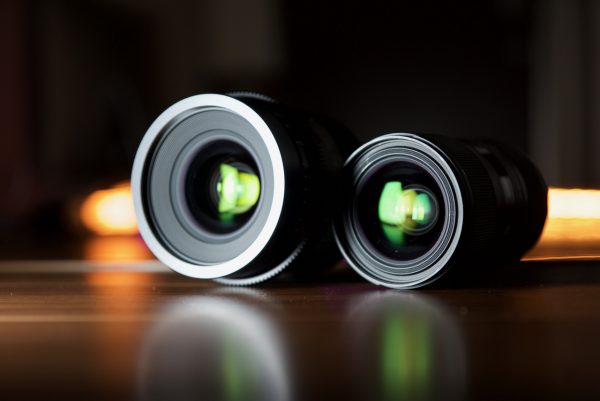
While the performance of both versions of the lenses are almost identical, their operation and uses are what sets them apart. A cine lens really isn’t meant for everyone and you may well find that the stills version of the lens suits your needs just fine. The great thing is you now have a choice between the two and can make a decision based on what is the right lens for you.
In the third part of my review I will be shooting on location with the cine zooms to see how they perform and operate in a professional environment.



